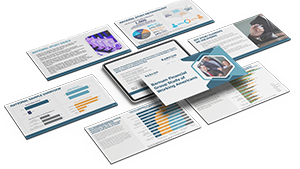
A Look at Its History, Importance, and Evolving Landscape
The American workplace has undergone a dramatic transformation over the past century, and with it, the nature of employee benefits. In the midst of this evolution, one piece of legislation stands as a cornerstone of protection for millions of American workers: the Employee Retirement Income Security Act of 1974, known as ERISA. More than a complex legal framework, ERISA represents a fundamental commitment to safeguarding the financial futures of individuals and their families.
The History of ERISA
Before ERISA’s enactment, the landscape of private employee benefit plans was largely unregulated, leading to widespread concerns and instances of abuse. Many workers faced the devastating prospect of losing their hard-earned retirement savings due to mismanagement, fraud, or company bankruptcies.
Perhaps the most poignant catalyst for ERISA was the 1963 Studebaker-Packard Corporation collapse in South Bend, Indiana. Thousands of workers, many with decades of service, found their promised pensions vanishing as the company went under. This highly publicized event, along with other instances of underfunded pensions and questionable investment practices, created a groundswell of public and political will for reform.
Against this backdrop, a bipartisan effort culminated in the passage of ERISA, signed into law by President Gerald Ford on September 2, 1974. Its primary aim was clear: to establish minimum standards for most voluntarily established retirement and health plans in private industry, ensuring that promises made to employees regarding their benefits would be kept.
The Enduring Importance of ERISA
ERISA’s importance cannot be overstated. It acts as a comprehensive shield for participants and a clear set of guidelines for those who manage their benefits. Key aspects of its enduring significance include:
Fiduciary Responsibility
At its heart, ERISA imposes stringent fiduciary duties on anyone who exercises discretionary control or authority over a plan’s management or assets. These fiduciaries (e.g., employers, plan administrators, investment managers) must act with unwavering loyalty and prudence, solely in the best interest of plan participants and beneficiaries. This includes diversifying investments, avoiding conflicts of interest, and following plan documents. This standard helps prevent self-dealing and ensures careful stewardship of retirement and health funds.
Transparency and Disclosure
ERISA mandates extensive reporting and disclosure requirements. Plans must provide participants with information about their benefits in clear, understandable language through documents like the Summary Plan Description (SPD). Annual reports (Form 5500) are filed with the government, offering a window into the plan’s financial health and operations. This transparency empowers participants and provides oversight for regulatory bodies.
Minimum Standards for Retirement Plans
For pension and 401(k) plans, ERISA sets minimum standards for:
- Participation: Who can join a plan and when.
- Vesting: How and when employees gain a non-forfeitable right to their accrued benefits.
- Benefit Accrual: How benefits are earned over time.
- Funding: Requirements for employers to adequately fund defined benefit pension plans to ensure future payouts.
Claims and Appeals Procedures
ERISA requires plans to establish fair and timely processes for participants to make claims for benefits and appeal denials, ensuring due process.
Enforcement and Penalties
The Department of Labor (DOL) and the IRS are the primary enforcement agencies. Non-compliance can lead to civil penalties (fines for late filings or disclosure failures), and in severe cases of fiduciary breach or fraud, even criminal charges and imprisonment. Participants also have the right to sue for benefits or breaches of fiduciary duty.
Recent Updates and the Evolving ERISA Landscape (2024-2025 and Beyond)
ERISA is not a static law; it’s regularly updated and interpreted through legislation, regulations, and court decisions. The past few years, particularly with the passage of the SECURE 2.0 Act of 2022, have brought a flurry of changes, with many taking effect in 2025 and beyond.
Key Impacts of SECURE 2.0 (Phased Implementation)
- Mandatory Automatic Enrollment for New Plans (Effective 2025): New 401(k) and 403(b) plans established after December 29, 2022, will be required to automatically enroll eligible employees starting in 2025. This aims to boost participation and retirement savings.
- Expanded Eligibility for Long-Term, Part-Time Employees (Effective 2025): The original SECURE Act made it easier for long-term part-time employees to participate in 401(k)s. SECURE 2.0 further accelerates this, requiring eligibility after two consecutive years (down from three) of at least 500 hours of service, starting with plan years after December 31, 2024.
- Increased Catch-Up Contributions for Ages 60-63 (Effective 2025): Individuals aged 60 through 63 will be able to make larger catch-up contributions to their retirement plans, providing a boost to near-retirees’ savings capacity.
- Roth Catch-Up Contributions for High Earners (Delayed until 2026): Originally slated for 2024, the requirement for high-income earners (those with prior-year FICA compensation over $145,000) to make catch-up contributions as Roth (after-tax) contributions has been delayed to taxable years beginning after December 31, 2025.
- Retirement Savings Lost and Found Database: The DOL is working on creating a national online database to help individuals locate old, forgotten retirement accounts, enhancing portability and security of benefits.
Department of Labor’s “Fiduciary Rule” (Ongoing Legal Challenges)
In April 2024, the DOL finalized a new regulation redefining “investment advice” under ERISA, effectively expanding the scope of who is considered an “investment advice fiduciary.” This rule, along with related amendments to prohibited transaction exemptions, aims to ensure that more financial professionals providing retirement advice are held to a fiduciary standard. However, this rule has faced immediate legal challenges, creating uncertainty about its ultimate implementation and enforcement. Its fate remains a prominent issue in the ERISA landscape.
Current ERISA Litigation Trends
ERISA litigation remains a highly active area, with several evolving trends:
Excessive Fee Litigation
Lawsuits alleging excessive fees charged to 401(k) and other defined contribution plans, and imprudent investment choices by plan fiduciaries, continue to be filed. While some courts are showing more willingness to dismiss weaker claims, these cases remain a significant concern for plan sponsors.
Forfeiture Cases
A new wave of lawsuits is challenging how 401(k) plans use “forfeitures” (non-vested employer contributions from employees who leave). Plaintiffs argue that using these funds to offset future employer contributions, while historically accepted, may violate ERISA’s anti-inurement rules and fiduciary duties. Courts have taken divergent views on these claims, with no clear circuit-level consensus yet.
Health Plan Litigation
ERISA litigation is increasingly extending to health and welfare plans. Cases are being brought against plan sponsors concerning:
- Pharmacy Benefit Manager (PBM) arrangements: Allegations of fiduciary breaches related to high prescription drug costs, “spread pricing,” and retained rebates.
- Wellness Program Surcharges: Challenges to tobacco surcharges or other health-related surcharges, asserting that wellness programs fail to meet regulatory requirements under HIPAA.
Pension Risk Transfer (PRT) Litigation
Lawsuits have emerged challenging employers’ decisions to transfer defined benefit pension obligations to insurance companies through annuity purchases, particularly when concerns arise about the selection of the annuity provider or the safety of the transfer.
ESG (Environmental, Social, Governance) Investments
While the DOL under the current administration has clarified that fiduciaries may consider ESG factors if they are financially relevant, this area remains a politically charged topic and a potential source of future litigation, depending on regulatory shifts.
Conclusion
ERISA has profoundly shaped the landscape of employee benefits in the United States, providing a critical layer of protection for millions of workers’ retirement savings and health coverage. From its origins born of necessity to its ongoing evolution through legislation like SECURE 2.0 and active litigation, ERISA continues to be a dynamic and essential federal law.
For employers, understanding and complying with ERISA’s intricate requirements is not merely a legal obligation but a fundamental responsibility to their workforce, safeguarding financial well-being and fostering trust in the workplace. As the legal and regulatory environment continues to shift, staying abreast of ERISA developments remains paramount for all stakeholders in employee benefits.

